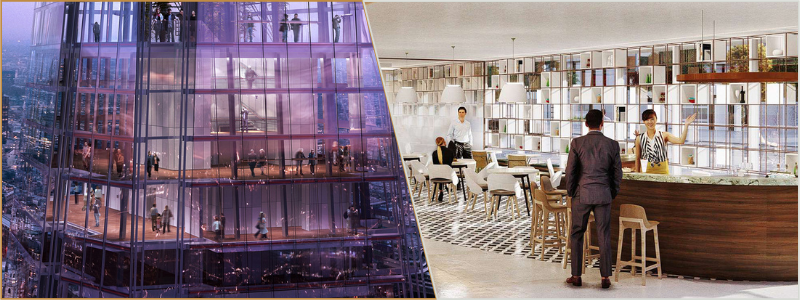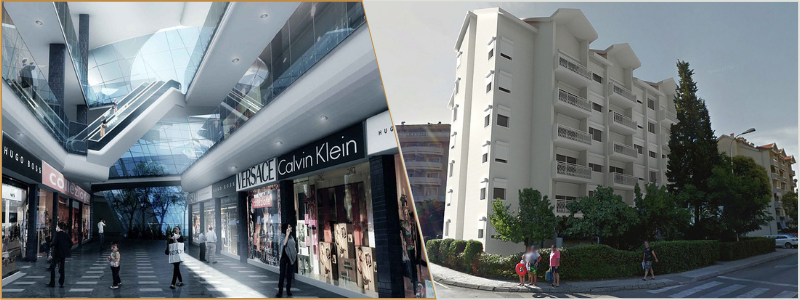Presenting a physical model or a printed booklet is still widely practiced as media for architectural visualization. However, their place in the architectural industry is steadily going under in favor of 3D animation. As the industry grows, even a 3D representation of an architectural design slowly becomes outpaced by a more sophisticated and animated visualization incorporating the benefits of storytelling.
Many 3D artists agree that a successful architectural visualization triggers an emotional connection with every audience. It may evoke a wonderful memory or fantasy in the viewers’ minds until they are convinced to purchase the model shown. Today, we share several methods to build an emotional association with an audience that can be achieved through storytelling.
What makes an effective architectural visual story
There are many similarities between an outstanding architectural visualization and compelling architectural storytelling. Listed below are a few of those differences:
Attention to details
Many architectural models can do without meticulous attention to the minor details—for example, a 3D architectural rendering on the exterior of a building. You can observe the walls, roof, doors, and windows, yet there is something about this type of model that lacks an environmental component—a landscape. Like most blueprints, the technical specifications, including the building’s dimensions, textures, and colors, are the main features to center on, so everything appears limited that way.
As for architectural visualization, adding a landscape to your design is more effective for marketing the display. Adding many natural viewpoints to the model can add value and realism to any screen. In addition, architectural visualization should also represent the structure’s position in the natural world we live.
Artistic input
The model’s visualization becomes a professional representation of engineering art by combining environmental components such as water, vegetation, natural light, clouds, and weather. The piece is suddenly filled with accurate depictions of a relationship between fabricated and natural objects. In conclusion, every visualization requires artistic facts to avoid being indifferent.
Best possible resolution
By presenting a visualized piece in the highest resolution available, the presenter will ensure a realistic approach to persuade their audience. A full HD resolution has been the standard for quite a while, but now architectural renderings gradually move to 4K resolution. That is a massive increase of pixels from 1080p to 2160p, which is quickly getting utilized to become the latest norm. A higher resolution allows the presenter to showcase every segment of the design on widescreen without losing precision. In reality, 8K resolution is currently in the market, although a screen’s capability to display such results is not widespread.
Storyboards
As the name implies, the prerequisite for storytelling is, well, a story; therefore, a storyboard is recommended as an essential step before creating an architectural model. A typical visualization is setting a digitalized building into space with many environmental details in it. In such a case, architectural storytelling requires you to add several elements to allow the audience’s minds to engage with them. The design easily comes alive by introducing people and characters who interact with the model’s surroundings (or any elements in the visualization).
Mainly, the focus is not on the characters but their interactions with the world around them. Usually, the interaction concept is grasped before rendering the visualization for a straightforward reason: it is easier to create inanimate objects when there is a clear intention of how the characters relate to the preliminary design. Although all architectural visualization highlights the engineered structures, showcasing a compelling narrative revolves around the characters.
Adding a story to the design creates an emotional impact on clients and the audience. The more genuine the story behind it is, the deeper the engagement an audience will experience. A memorable presentation can stay in the audience’s mind for a long time.
RELATED: How Much Does It Cost to Hire an Architectural Design Service?

Emotional connection
The entire storytelling point manifests a profound and moving connection between an audience and the architectural visualization. Traditionally, visual storytelling did not rise in the architectural industry. It is typically the essence of any entertainment media (movies, comics, games, etc.) Although, the engineering and architectural systems are much more clinical than the works displayed on films and TV shows.
Yet, we all can recognize that the architectural industry has proven the capability of incorporating life-inspired narratives into its visualization projects. For example, many online real-estate websites feature stories about how inhabitants go about their daily activities, introducing real situations into fabricated visualizations.
Visualization as a storytelling tool
Most of the time, 3D rendering artists who specialize in architectural design are not given a chance to craft a compelling story for their creations due to the nature of their service. The designers may only produce a digital representation of any structure and fulfill their client’s demands within a limited time.
As a result, crafting an engaging story in the model around predetermined visual requirements is a tedious task. As problematic as it can be, it certainly is not impossible. Here are some methods to turn a 3D architectural design into an effective tool for storytelling.
3D Architectural animation
3D architectural animation is a widely standard tool for visual storytelling. The concept may include an animated tour or walkthrough of a building or a simple 360-degree view of the design. Another basic tool includes an interactive slideshow, which is not necessarily an animation but can still effectively produce an emotional connection when done correctly.

Close-ups perspectives
One of the foremost tasks to remember is adding attention to detail. Any elements such as lighting, shadow, reflection on a body of water, and leaves blowing in the wind, are all external objects that can make the visualization come alive. Even close-ups in high resolution of the small things can make a tremendous difference. Demonstrating a model in a high-quality, zoomed-in view can simply project the quality of your product. A presenter can use this method to show some parts of the interior structure:
- Wall texture
- Soft linen of a bedcover
- Leather stitching in the furniture upholstery
- Shiny tile floor in the bathroom
Time and weather
The combination of time and weather plays a vital role in setting up the mood of a visualization. Fortunately, most 3D architectural design software can depict all seasons and time under any imaginable weather pattern. Practiced by skilled artists, the feature helps create an organic rendering. The image starts as a photograph (or video recording in animation) of an existing structure in the best possible lighting condition and captured from an ideal angle.
Time and weather affect how any fabricated object may look in real-time. A selection of environmental elements like rocks and vegetation may develop pedantically, but consistency with the weather exposure can make for good storytelling.
RELATED: Top Reasons for Using Rendering in the 3D Animation Process
Actors or characters
The audience ought to see how an architectural project (whether a house, apartment building, office space, a traditional marketplace, shopping center, school, road, bridge, etc.) can affect their daily lives. It will allow them to find the benefits before they decide to buy into it. You can also achieve the best results when you incorporate people into the picture.
A detailed visualization with a vivid depiction of this natural element can trigger the emotional response. With a realistic scenario in which people experience living in and around the structure, for example, characters representing natural behavior like wearing appropriate clothing for the given forecast and based on the day. One can also add how people interact or use everyday items with a natural facial expression of joy.
Characters must also stay consistent with the location. For example, if there is an elementary school nearby, reflect how kids behave in a playground, classroom window, or leaving school. In summary, for storytelling to work as intended, the 3D visualization is based on a population study of actual people’s behaviors.
Storytelling must include all those elements in a consistent, interlocked manner to achieve an emotional connection between the audience and design. Demography ought to be the centerpiece on where all other design elements interact. Remember to study the audience and encourage them to explore the world that will be built around them.
How Cad Crowd can help
When you decide to hire help for your next 3D Architectural project, a friendly representative at Cad Crowd will connect you to a freelancing professional that we know and trust to help you make your design come to life with 3D Rendering. We know your time is valuable, which is why we carefully screen our community of vetted freelancers to offer optimal quality control and project confidentiality. To find out more pricing information, contact us today with your design goals, and we’ll give you a free quote!
